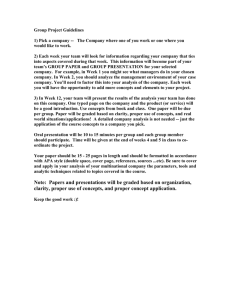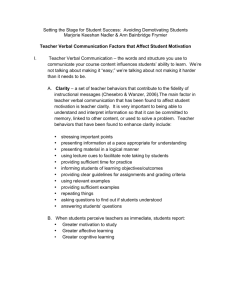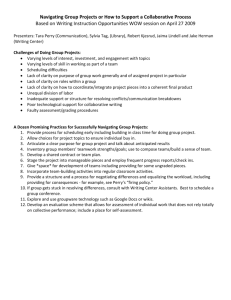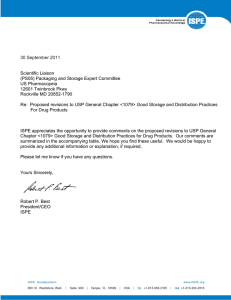Developing a Research Statement
advertisement
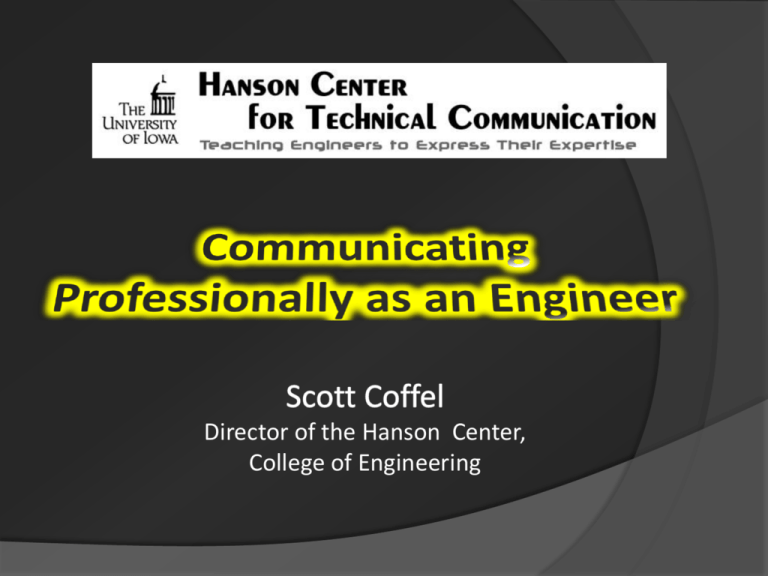
Director of the Hanson Center, College of Engineering Technical Writing is Not a “Soft Skill” Why does the College have its own Writing Center? Professional engineers tell us that at least 7O% of their work involves writing and public speaking. Success in engineering requires communicating to multiple audiences: fellow professionals, decision-makers, and the general public. The Zen of Technical Writing Engineers achieve clarity and precision through drafts, feedback, and revision. No document is too small to be written with care. Writing is a feat of verbal engineering achieved by logical, goal-oriented problem-solvers. The Science of Revision: Filtering Noise Out of Sentences Noise is any element of writing that impedes your reader’s comprehension. For example… “Pour the concrete when it is above 40°F.” “Our intention is to implement the verification of the reliability of the system in the near future.” Noise Undermines Your Credibility “Frerebeau (4) in this experiment recognized the significance of recognizing visual cures while driving to the safety of the drivers.”* *Anonymous Student, 2004 Suggested Revision “In this experiment, Frerebeau (4) demonstrated the significance of visual cues for enhancing driver safety.” From the Sentence to the Paragraph Effective paragraphs exhibit— Unity: singleness of purpose. Focus: a strong topic sentence and supporting evidence. Flow: transitions from one sentence to the next, from familiar to new information. Examples of Clarity (1) “The design of any device is fraught with failure. Indeed, the way engineers achieve success in their designs is by imagining how they might fail. If gases escaping from a booster rocket can lower efficiency or cause damage, then O-ring seals are added. If the friction of re-entry can melt a spacecraft, then a heat shield is devised.” Petroski, H. (2003, August 29). Failure is always an option. New York Times. Retrieved September 11, 2003, from http://www.nytimes.com Examples of Clarity (2) “Pure, unalloyed metals are often soft and of low strength, and therefore of limited use in everyday applications. Solid solution alloys are harder and stronger because distortions in the crystal structure introduced from different-sized atoms makes deformation more difficult. For both types of metals, as grain size is reduced their hardness and strength increases.”* *Anonymous Student, 2005 Mastering the Art of Technical Communication By eliminating noise in your documents, you achieve clarity and precision. The greatest merit in writing is for your words to disappear into the thought. Thank You Write Well and Prosper
